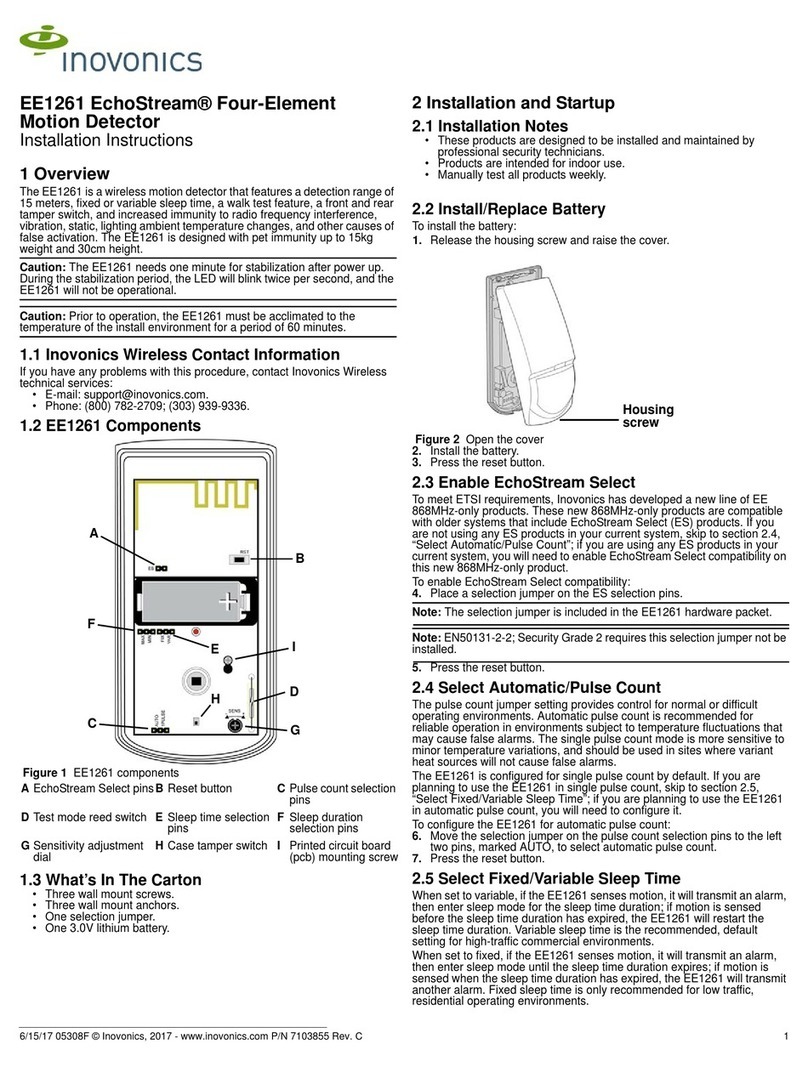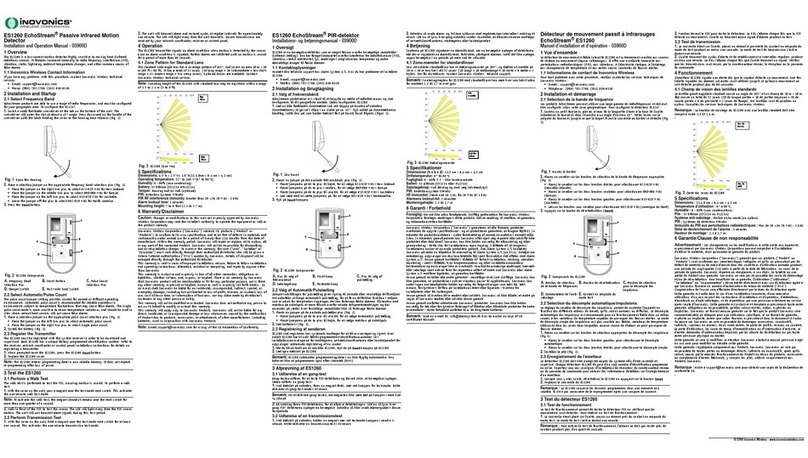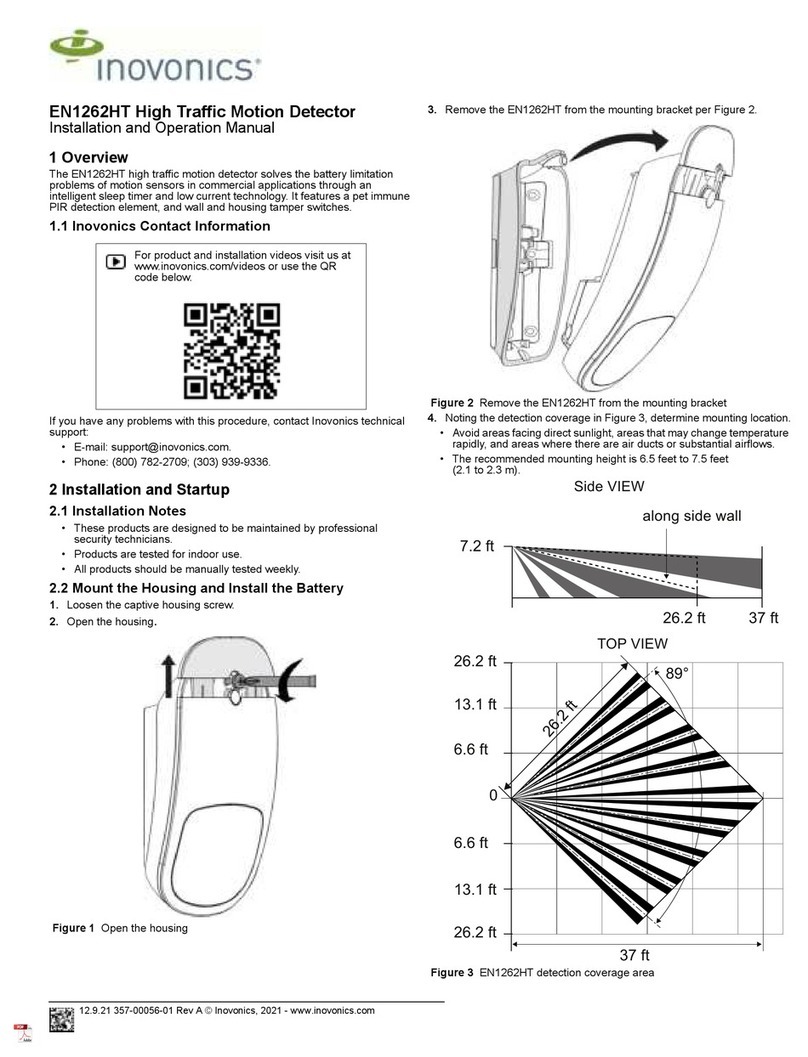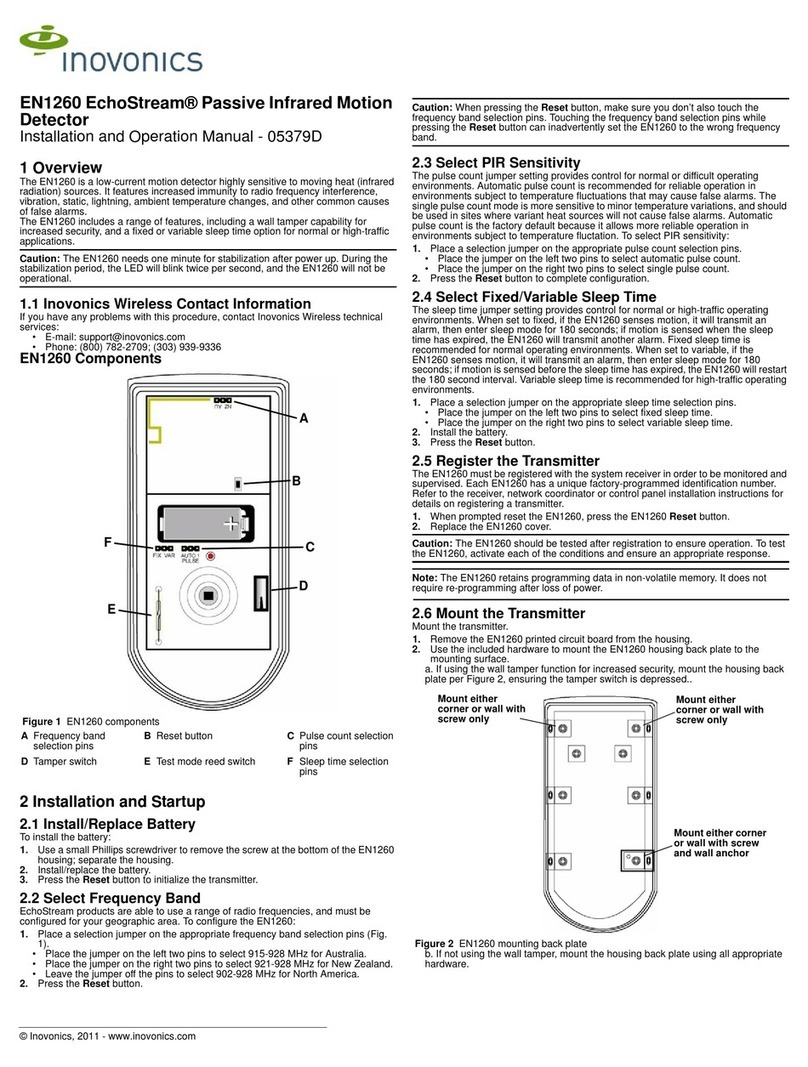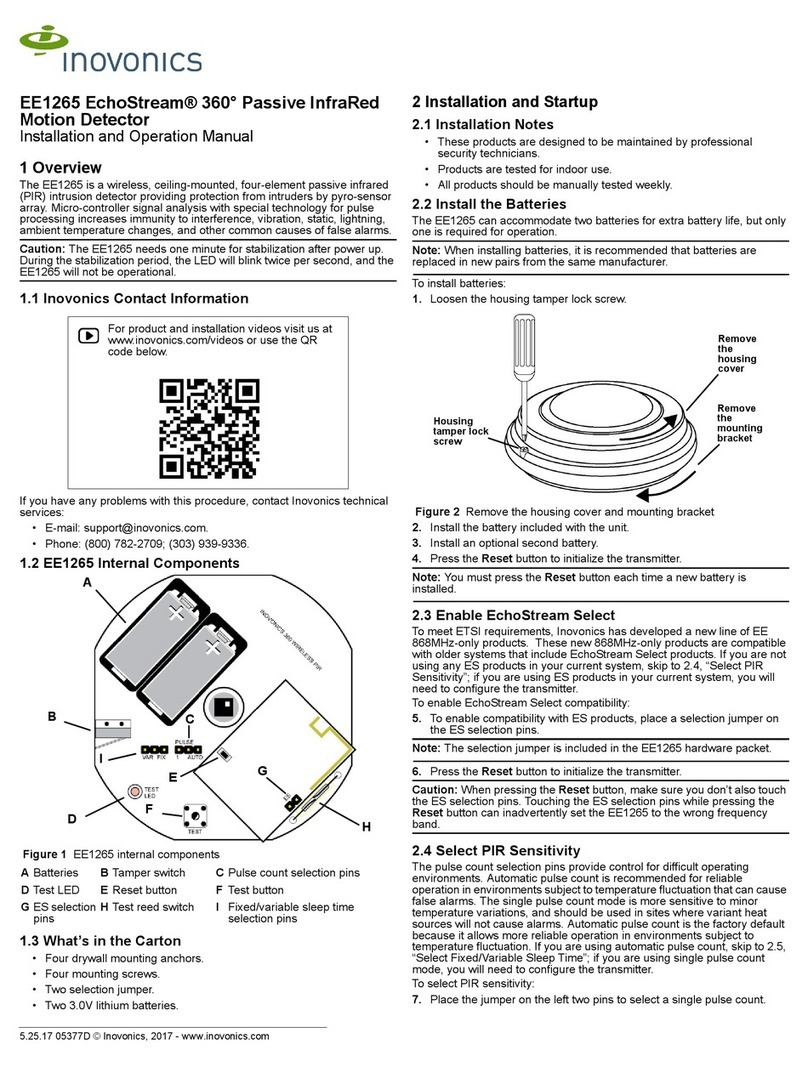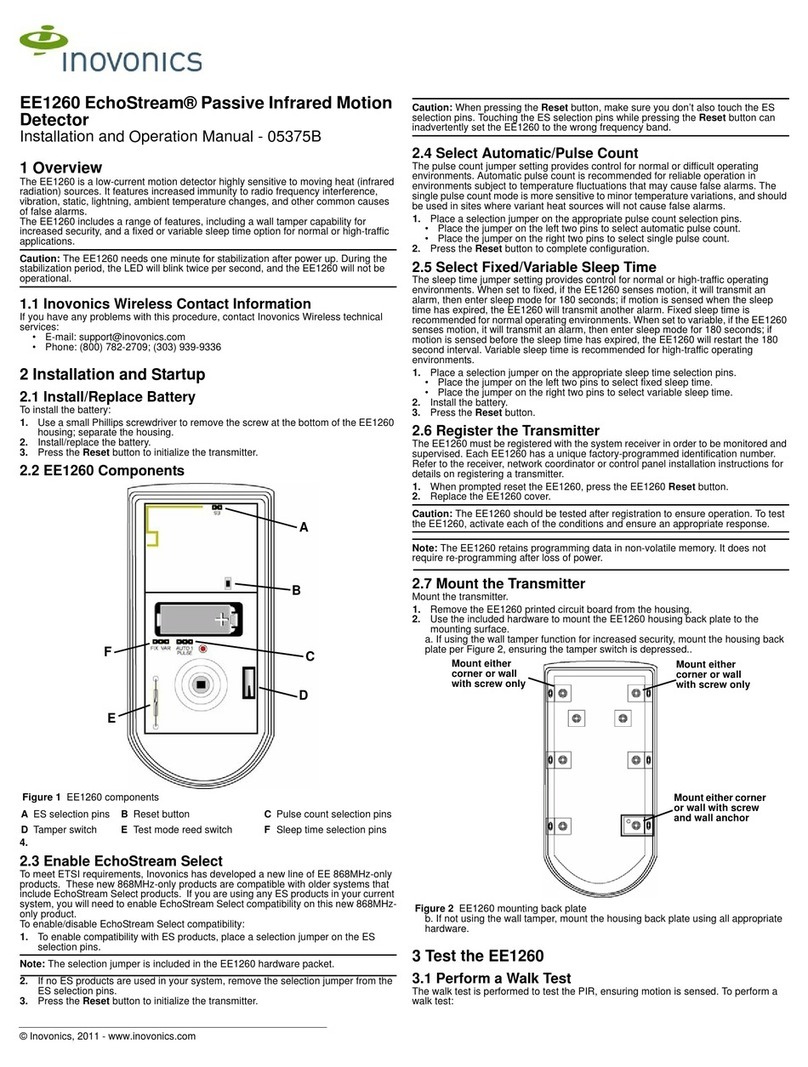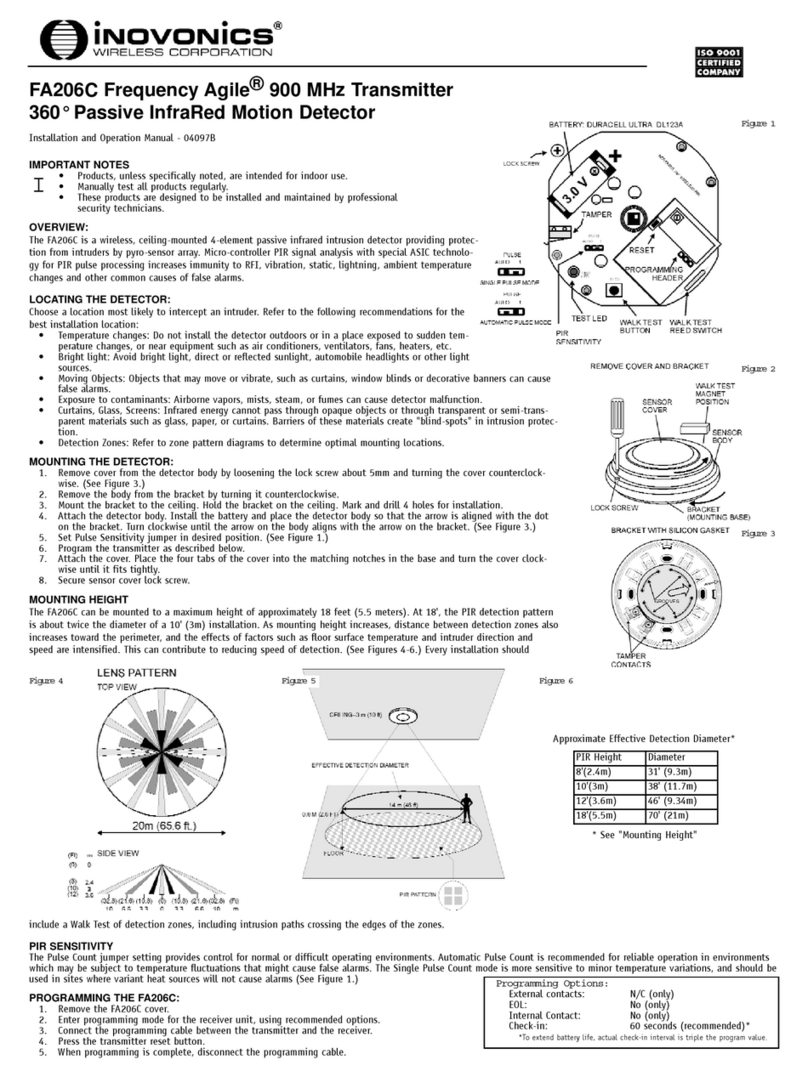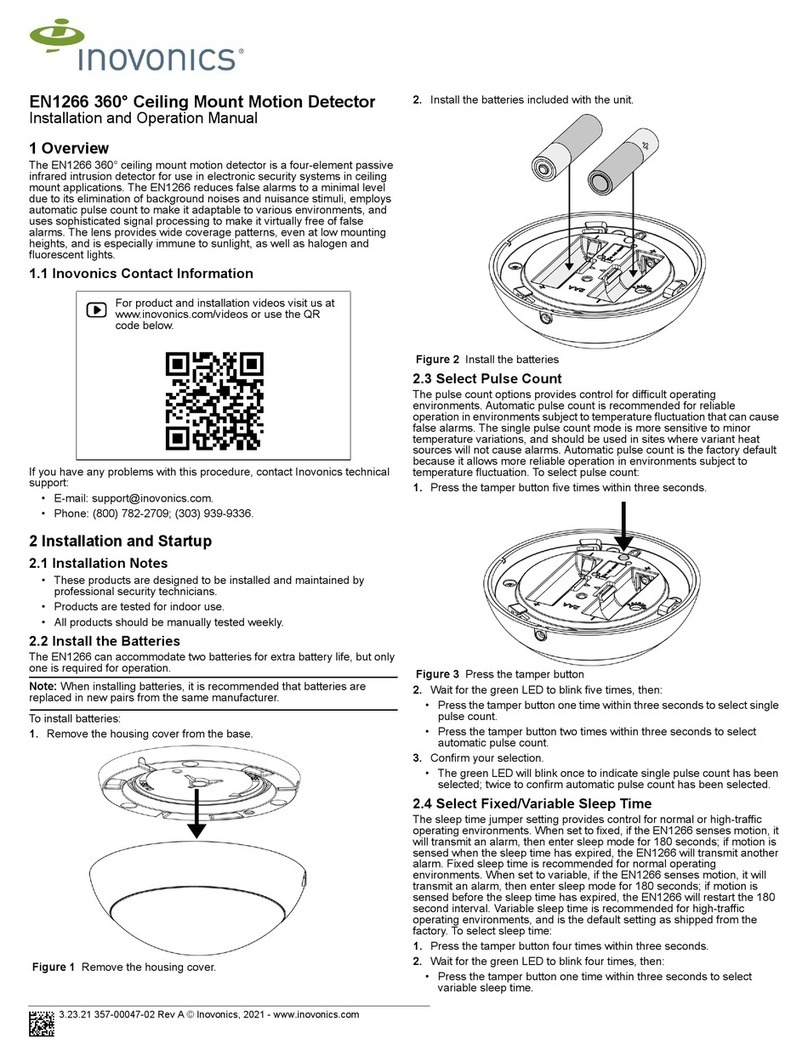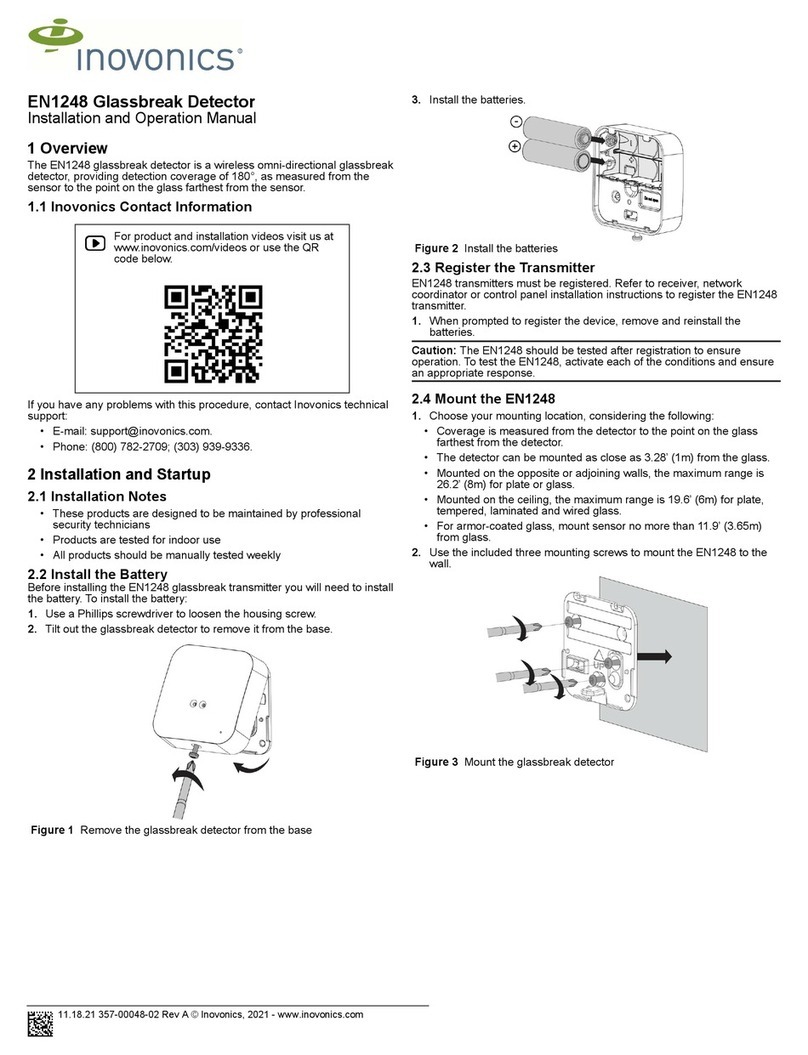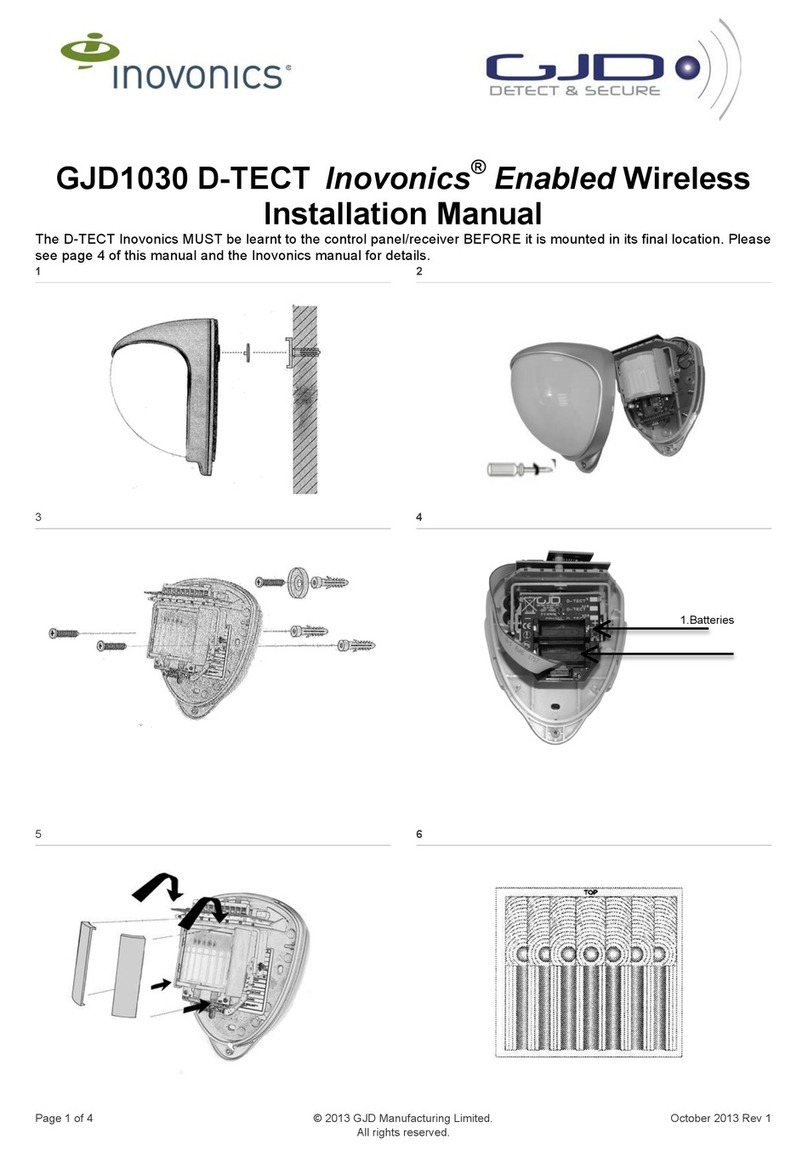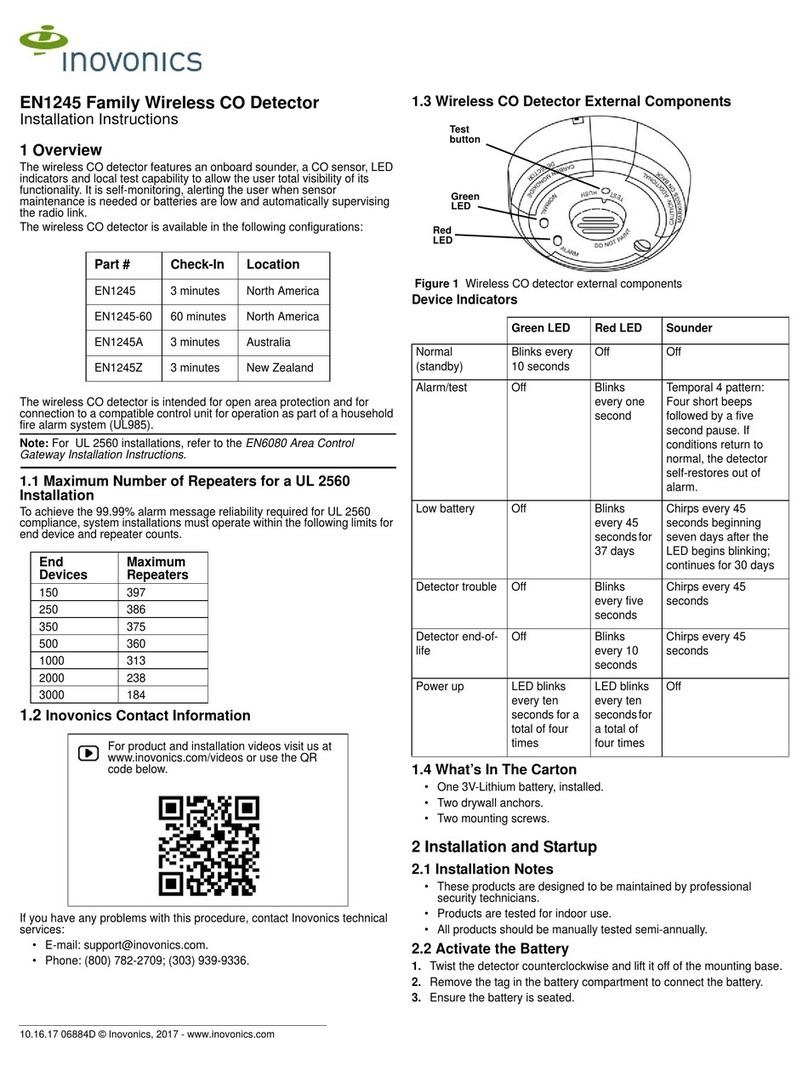
1.27.21 357-00045-01 Rev A © Inovonics, 2021 - www.inovonics.com 3
will transmit an alarm, then enter sleep mode for 180 seconds; if motion is
sensed when the sleep time has expired, the EN1263 will transmit another
alarm. Fixed sleep time is recommended for normal operating
environments, and is the default setting as shipped from the factory. When
set to variable, if the EN1263 senses motion, it will transmit an alarm, then
enter sleep mode for 180 seconds; if motion is sensed before the sleep
time has expired, the EN1263 will restart the 180 second interval. To select
sleep time:
1. Press the tamper button four times within three seconds.
2. Wait for the green LED to blink four times, then:
• Press the tamper button one time within three seconds to select
variable sleep time.
• Press the tamper button two times within three seconds to select fixed
sleep time.
3. Confirm your selection.
• The green LED will blink once to indicate variable sleep time has been
selected; twice to confirm fixed sleep time has been selected.
2.5 Register the Transmitter
The EN1263 must be registered with the system receiver in order to be
monitored and supervised. Each EN1263 has a unique factory-
programmed identification number. Refer to the receiver, network
coordinator or control panel installation instructions for details on
registering a transmitter.
1. When prompted to reset the transmitter, press the tamper button.
2. Replace the housing cover.
Caution: The EN1263 should be tested after registration to ensure
operation. To test the EN1263, activate each of the conditions and ensure
an appropriate response.
3 Test the EN1263
When in walk test mode the test LED will light red every time the EN1263
senses motion. The unit will not transmit alarm signals during this test
period. Once initiated, the walk test will last for ten minutes and then the
EN1263 will automatically return to normal operation. To initiate a walk test:
1. Press the tamper button three times within three seconds.
Note: The test LED only lights red during the walk test.
4 Specifications
Dimensions: 4.25” x 2.28” x 1.7” (108 mm x 58 mm x 43 mm).
Weight: 3.2 ounces (90 grams)
Operating temperature: 32°F to 120°F (0°C to 49°C).
Humidity: 0 - 93% (non-condensing).
Battery (BAT604): CR123A or equivalent.
Typical battery life: Two years.
Tamper: Housing and/or Wall (optional).
PIR: Quad Element PIR.
Coverage area: 26ft (8m).
Warm up period: 40 seconds.
Check-in time: Three minutes.
5 Television and Radio Interference
This equipment has been tested and found to comply with the limits for a
Class B digital device, pursuant to Part 15 of the FCC Rules. These limits
are designed to provide reasonable protection against harmful interference
in a residential installation. This equipment generates, uses and can
radiate radio frequency energy and, if not installed and used in accordance
with the instructions, may cause harmful interference to radio
communications. However, there is no guarantee that interference will not
occur in a particular installation. If this equipment does cause harmful
interference to radio or television reception, which can be determined by
turning the equipment off and on, the user is encouraged to try to correct
the interference by one or more of the following measures:
• Reorient or relocate the receiving antenna.
• Increase the separation between the equipment and receiver.
• Connect the equipment into an outlet on a circuit different from that to
which the receiver is connected.
• Consult the dealer or an experienced radio/TV technician for help.
6 FCC Part 15 and Innovation, Science and
Economic Development Canada (ISED)
Compliance
This device complies with part 15 of the FCC Rules, and ISED license-
exempt RSS standard(s). Operation is subject to the following two
conditions: (1) this device may not cause interference, and (2) this device
must accept any interference that may cause undesired operation of the
device.
Le présent appareil est conforme aux CNR Innovation, Sciences et
Développement économique Canada applicables aux appareils radio
exempts de licence. L'exploitation est autorisée aux deux conditions
suivantes: (1) l'appareil ne doit pas produire de brouillage, et (2) l'utilisateur
de l'appareil doit accepter tout brouillage radioélectrique subi, même si le
brouillage est susceptible d'en compromettre le fonctionnement.
Caution: Changes or modifications not expressly approved by the party
responsible for compliance could void the user's authority to operate the
equipment.
7 Radiation Exposure Limits
7.1 FCC
This equipment complies with FCC radiation exposure limits set forth for an
uncontrolled environment. In order to avoid the possibility of exceeding the
FCC radio frequency exposure limits, human proximity to the antenna shall
not be less than 20 cm during normal operation and must not be co-located
or operating in conjunction with any other antenna or transmitter.
7.2 ISED
This equipment complies with ISED RSS-102 radiation exposure limits set
forth for an uncontrolled environment. This transmitter must be installed to
provide a separation distance of at least 20 cm from all persons and must
not be co-located or operating in conjunction with any other antenna or
transmitter.
Cet équipement est conforme avec ISED RSS-102 des limites d'exposition
aux rayonnements définies pour un environnement non contrôlé. Cet
émetteur doit être installé à au moins 20 cm de toute personne et ne doit
pas être colocalisé ou fonctionner en association avec une autre antenne
ou émetteur.
